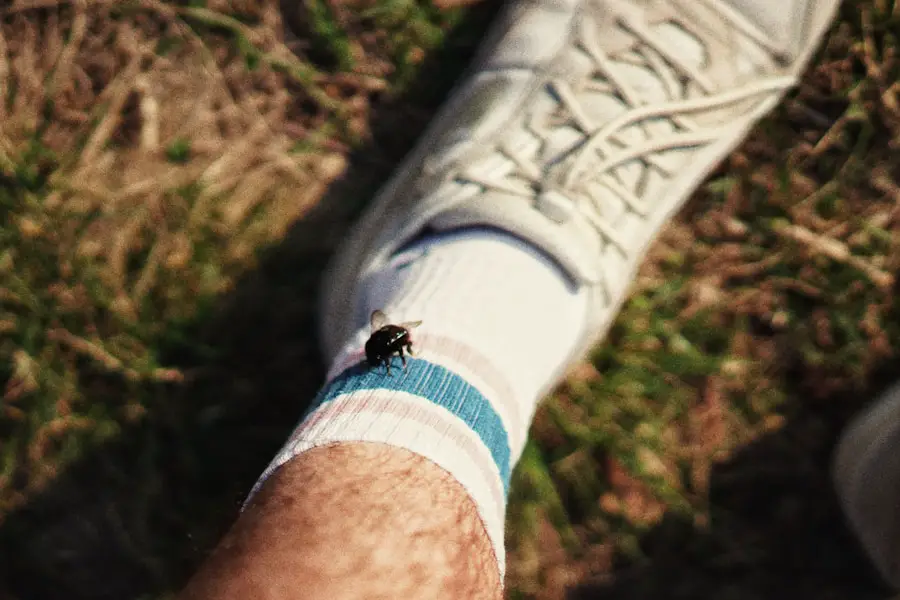Ticks are small arachnids that can pose significant health risks to humans and animals alike. They are known vectors for various diseases, including Lyme disease, Rocky Mountain spotted fever, and anaplasmosis. The risk of contracting these diseases increases with the duration of tick attachment; a tick must typically be attached for several hours to transmit pathogens effectively.
Lyme disease, for instance, is caused by the bacterium Borrelia burgdorferi and is primarily transmitted by the black-legged tick, also known as the deer tick. Symptoms can range from a characteristic bull’s-eye rash to severe neurological issues if left untreated. The geographical distribution of ticks is also a critical factor in understanding the risks associated with tick bites.
Certain regions, particularly those with dense vegetation and high deer populations, are more prone to tick infestations. For example, the northeastern United States has seen a significant rise in Lyme disease cases over the past few decades, correlating with increased deer populations and warmer temperatures that favor tick survival. Awareness of these risks is essential for anyone who spends time outdoors, especially in wooded or grassy areas where ticks thrive.
Key Takeaways
- Tick bites can transmit diseases such as Lyme disease and Rocky Mountain spotted fever, so it’s important to understand the risks associated with them.
- Wearing light-colored, long-sleeved shirts and pants can help prevent ticks from latching onto your skin while hiking or camping.
- Using insect repellents with DEET or permethrin can effectively repel ticks and other insects when applied properly.
- After hiking, thoroughly check your body and clothing for ticks, especially in warm and moist areas such as the hairline, armpits, and groin.
- Creating a tick-free zone at campsites by clearing tall grass, using insecticide, and setting up tents and sleeping areas away from wooded areas can help prevent tick bites.
Choosing the Right Clothing for Tick Prevention
When venturing into tick-prone environments, selecting appropriate clothing can significantly reduce the likelihood of tick bites. Opting for long-sleeved shirts and long pants is a fundamental strategy. Light-colored clothing is particularly advantageous as it makes it easier to spot ticks before they attach.
Fabrics that are tightly woven can also provide an additional barrier against these pests. For instance, wearing pants tucked into socks or boots can create a physical barrier that makes it more challenging for ticks to reach the skin. In addition to basic clothing choices, specialized outdoor apparel designed for tick prevention is available on the market.
Some manufacturers treat their clothing with permethrin, an insect repellent that remains effective even after multiple washes.
This treatment can kill ticks on contact and provide an extra layer of protection. Furthermore, wearing a hat can help shield the scalp from ticks that may drop from overhanging branches or foliage.By combining these clothing strategies, individuals can significantly mitigate their risk of tick exposure while enjoying outdoor activities.
Using Insect Repellent Effectively

Insect repellents play a crucial role in preventing tick bites, but their effectiveness hinges on proper application and selection. The Centers for Disease Control and Prevention (CDC) recommends using repellents that contain at least 20% DEET, picaridin, or oil of lemon eucalyptus. These active ingredients have been shown to provide substantial protection against ticks when applied correctly.
It is essential to apply repellent not only to exposed skin but also to clothing, as ticks can crawl onto skin from fabric. When applying insect repellent, it is vital to follow the manufacturer’s instructions closely. For instance, DEET should be reapplied every few hours, especially if sweating or after swimming.
Additionally, individuals should avoid applying repellent to cuts or irritated skin and should wash it off once returning indoors. For those who prefer natural alternatives, products containing oil of lemon eucalyptus can be effective but may require more frequent reapplication. Understanding how to use insect repellents effectively can significantly enhance one’s defense against tick bites during outdoor excursions.
Checking for Ticks After Hiking
| Location | Number of Hikers | Number of Ticks Found |
|---|---|---|
| Appalachian Trail | 150 | 25 |
| Yellowstone National Park | 100 | 15 |
| Yosemite National Park | 75 | 10 |
Post-hiking tick checks are an essential practice for anyone who has spent time in areas where ticks are prevalent. Conducting a thorough examination of the body can help identify ticks before they have a chance to attach and transmit diseases. It is advisable to check all areas of the body, including behind the ears, under the arms, around the waist, and between the legs.
Ticks often seek warm, moist areas to attach themselves, making these spots particularly vulnerable. In addition to personal checks, it is wise to inspect clothing and gear as well. Ticks can easily hitch a ride on backpacks, hats, and other equipment.
Shaking out clothing and gear before entering a vehicle or home can help dislodge any ticks that may be present. For children and pets who have been outdoors, it is equally important to conduct thorough checks as they may have come into contact with ticks during playtime or walks in nature. By making tick checks a routine part of outdoor activities, individuals can significantly reduce their risk of tick-borne illnesses.
Creating a Tick-Free Zone at Campsites
Establishing a tick-free zone at campsites is crucial for ensuring safety during outdoor adventures. When selecting a campsite, it is advisable to choose areas that are away from dense vegetation and tall grasses where ticks are likely to thrive. Setting up tents in open areas with good sunlight exposure can also deter ticks since they prefer shaded environments with high humidity.
Once at the campsite, creating barriers can further minimize tick exposure. Clearing away leaf litter and brush around the tent area helps eliminate potential tick habitats. Additionally, placing tents on elevated surfaces or using tarps can provide an extra layer of protection against ground-dwelling ticks.
Regularly checking the campsite for ticks and maintaining cleanliness by disposing of food scraps properly can also help reduce the likelihood of attracting wildlife that may carry ticks.
Avoiding Tick-Infested Areas

Awareness of tick-infested areas is vital for anyone engaging in outdoor activities such as hiking, camping, or hunting. Certain environments are more conducive to tick populations; these include wooded areas with dense underbrush, tall grasses, and regions near water sources where humidity levels are higher. Understanding these habitats allows individuals to make informed decisions about where to spend their time outdoors.
When planning outdoor activities, it is beneficial to consult local resources or websites that provide information on tick activity in specific regions. Many state health departments offer maps indicating areas with high tick populations or recent reports of tick-borne diseases. By avoiding known infested areas during peak seasons—typically spring through fall—individuals can significantly reduce their risk of encountering ticks while enjoying nature.
Treating Gear and Equipment for Tick Prevention
In addition to personal protective measures, treating outdoor gear and equipment can enhance overall tick prevention strategies. Many outdoor enthusiasts overlook this aspect; however, ticks can easily latch onto backpacks, sleeping bags, and other gear during outdoor activities. One effective method is to treat clothing and gear with permethrin spray before heading out into tick-prone areas.
This insecticide binds to fabric fibers and remains effective through several washes. For those who prefer not to use chemical treatments, regular cleaning of gear can help minimize tick presence. Washing clothes in hot water after returning from outdoor activities can kill any ticks that may have hitched a ride.
Additionally, storing gear in sealed containers when not in use can prevent ticks from infesting items over time. By incorporating gear treatment into their outdoor preparation routine, individuals can further safeguard themselves against tick bites.
Seeking Medical Attention for Tick Bites
If bitten by a tick, seeking medical attention promptly is crucial for effective treatment and prevention of potential diseases. It is essential to remove the tick as soon as possible using fine-tipped tweezers; grasping the tick as close to the skin’s surface as possible minimizes the risk of leaving mouthparts embedded in the skin. After removal, cleaning the bite area with soap and water or rubbing alcohol is recommended.
Monitoring for symptoms following a tick bite is equally important. Early signs of Lyme disease may include fever, chills, fatigue, and muscle aches within days or weeks after being bitten. The characteristic bull’s-eye rash may appear within three to 30 days but not always; therefore, awareness of other symptoms is critical for early diagnosis and treatment.
If any unusual symptoms develop after a tick bite or if there are concerns about potential exposure to tick-borne diseases, consulting a healthcare professional is essential for appropriate evaluation and management. By understanding the risks associated with tick bites and implementing preventive measures such as appropriate clothing choices, effective use of insect repellents, thorough post-hiking checks, creating safe camping environments, avoiding infested areas, treating gear properly, and seeking medical attention when necessary, individuals can significantly reduce their risk of encountering ticks and contracting related diseases while enjoying outdoor activities.
When hiking, it’s important to be prepared for all aspects of the outdoors, including pesky ticks. One helpful article to check out is
